Make it last.
Even the best cutting boards need care if you want them to last…
The best way to protect wood is to keep it from getting too wet, but also to keep it from drying out! This sounds like a contradiction, but it’s not, and there’s a magic substance that simultaneously protects against both of these issues: oil, of course!
But which oil? Any oil is potentially suitable, as long as it is compatible for food contact.
But many have “flaws”: too thick, too thin, too fragrant, with a tendency to turn rancid quickly, or not completely safe and natural.
We have found a natural and environmentally friendly solution by choosing Walrus Oil®. Don’t worry, “No walrus harmed” as their label states! Here’re the ingredients: Coconut oil, beeswax, pure mineral oil and Vitamin E. That’s it. And the packaging is really cool, isn’t it?
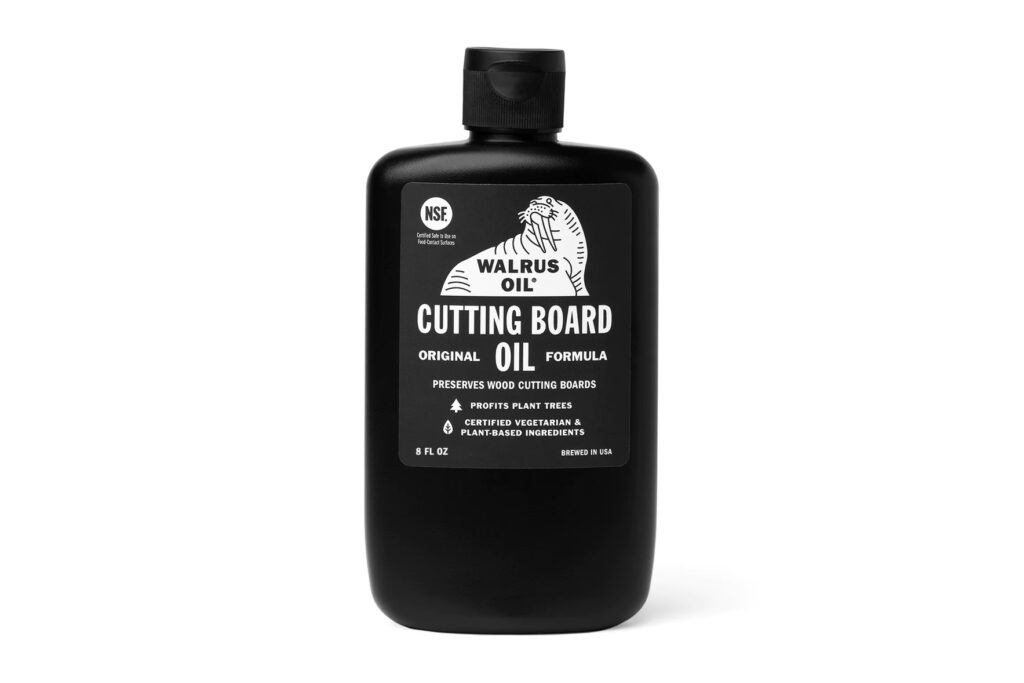
Want more? Then here is the Wood Wax from the same company. If oil deeply nourishes and protects against water, wax creates a real water-repellent barrier, as well as enhancing natural wood color. And very little is needed!
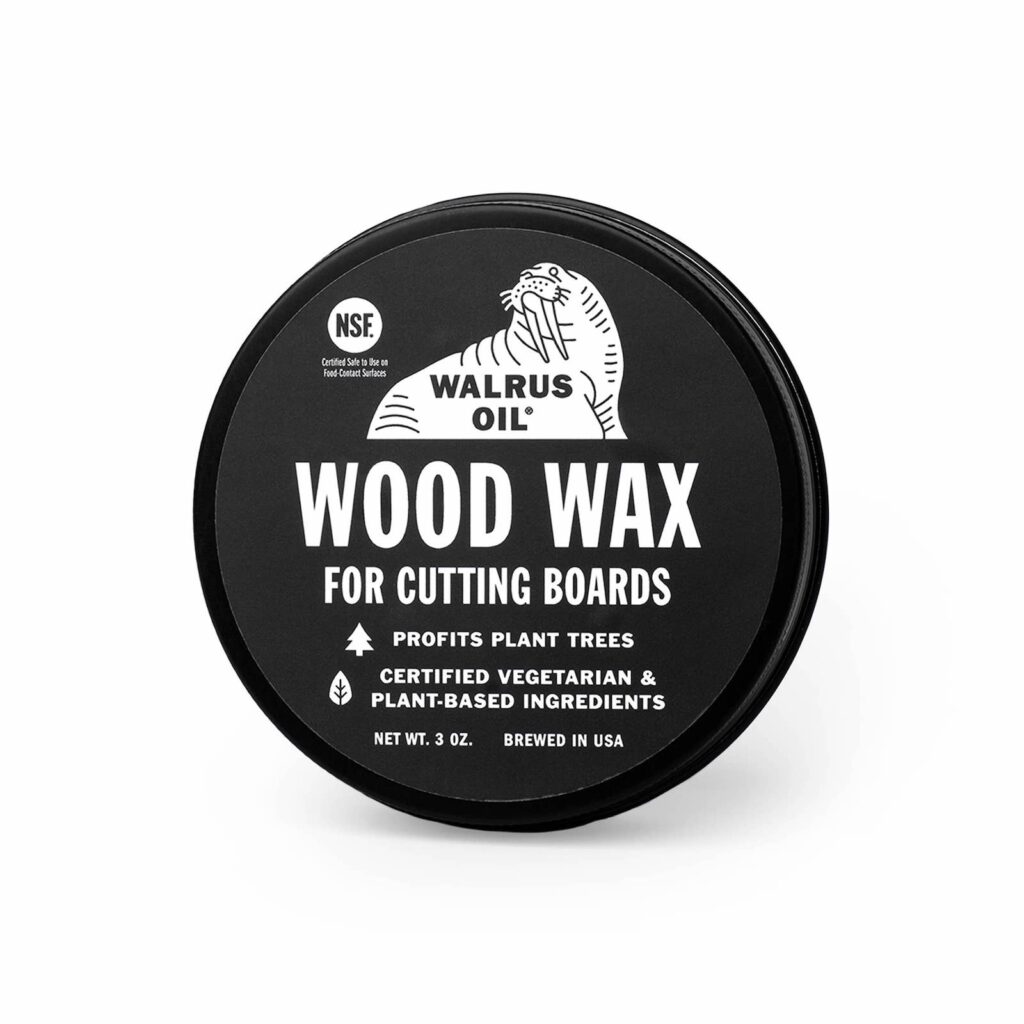
Of course, both these products can be used for all wood surfaces that come in contact with food, from spoons to bowls to countertops.
Regardless of what product you decide to use, (but you can really “Trust the Tusk“) here are some best practice to take care of a wooden cutting board, ensure its longevity and maintain food safety:
- Cleaning: After each use, wash the cutting board with warm water and mild dish soap. Scrub gently with a sponge or dishcloth to remove any food particles. Avoid using harsh cleaning agents or soaking the board in water for extended periods.
- Drying: Thoroughly dry the cutting board with a clean towel or allow it to air dry in a vertical position. Avoid leaving it to air dry horizontally, as moisture can get trapped and potentially damage the wood.
- Avoid submerging in water: Wooden cutting boards should never be submerged in water or run through a dishwasher, as excessive moisture can cause warping, splitting, or cracking.
- Regular oiling: Wooden cutting boards need to be regularly oiled to maintain their condition. Food-grade mineral oil or specialized cutting board oil can be applied using a clean cloth or paper towel. Apply a generous amount of oil and allow it to penetrate the wood for several hours or overnight. Wipe off any excess oil before using the cutting board again.
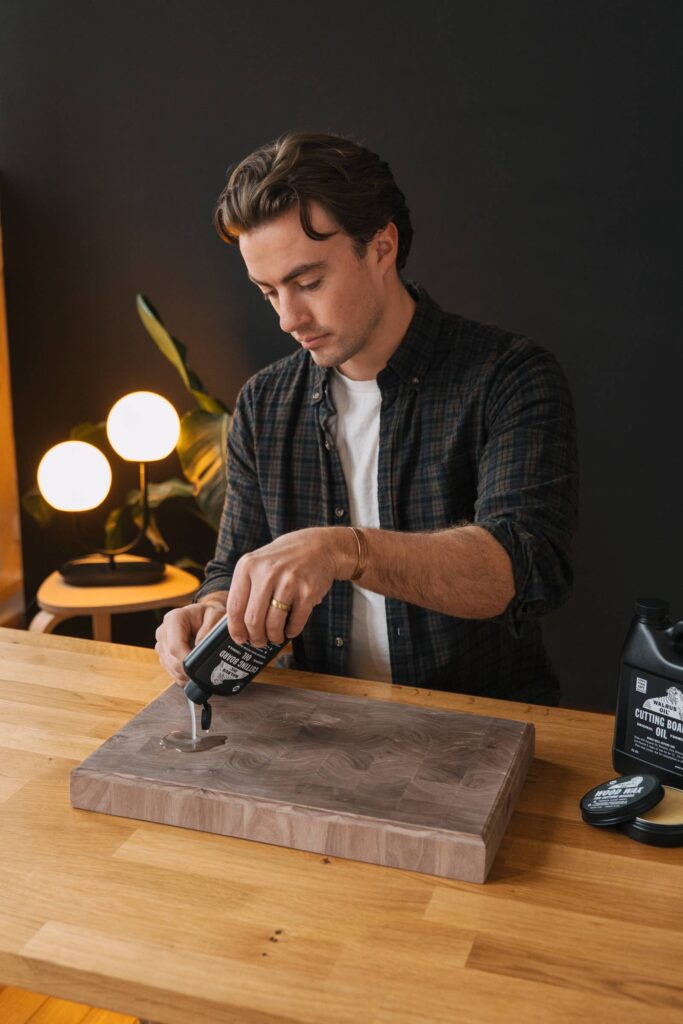
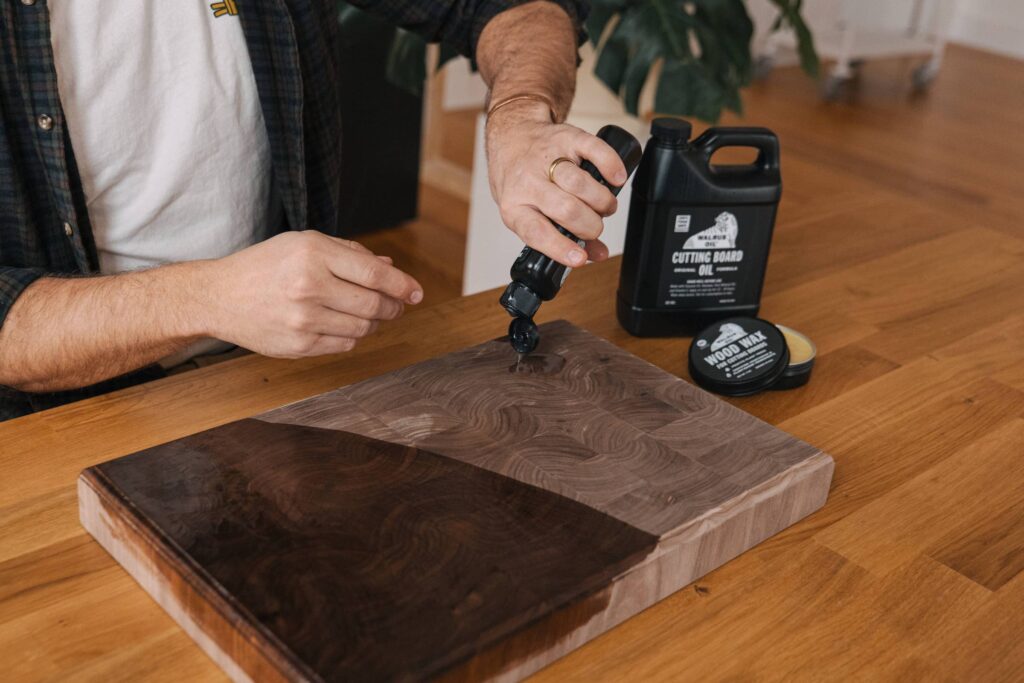
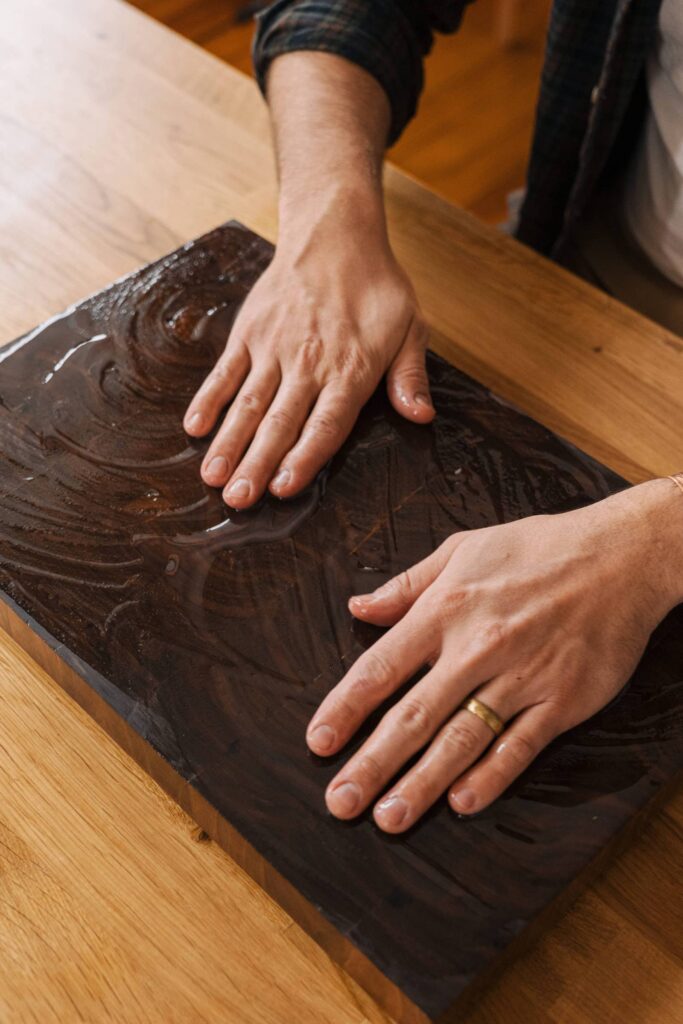
- Remove stains and odors: For stubborn stains or odors, sprinkle coarse salt or baking soda over the board and scrub gently using a lemon or white vinegar. Rinse with water and dry thoroughly.
- Avoid heat exposure: Avoid exposing the wooden cutting board to direct heat sources such as stovetops or hot pans, as extreme heat can damage the wood.
- Regular maintenance: Inspect the cutting board regularly for any signs of damage or wear. Sanding the surface lightly with fine-grit sandpaper can help remove scratches and smooth the wood. Remember to reapply oil afterward.
By following these care guidelines, you can ensure that your wooden cutting board remains in good condition, safe to use, and lasts for a long time.